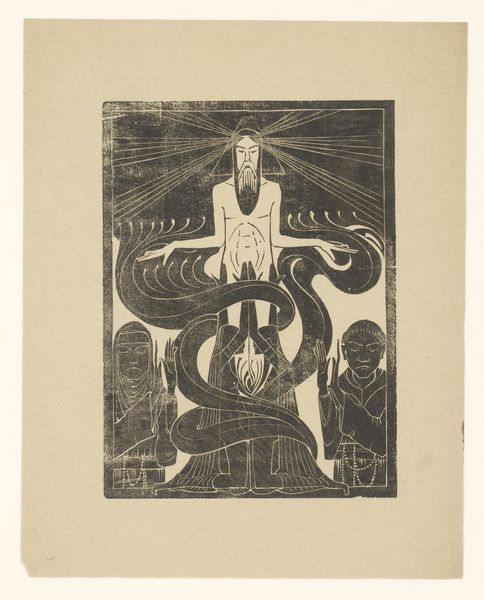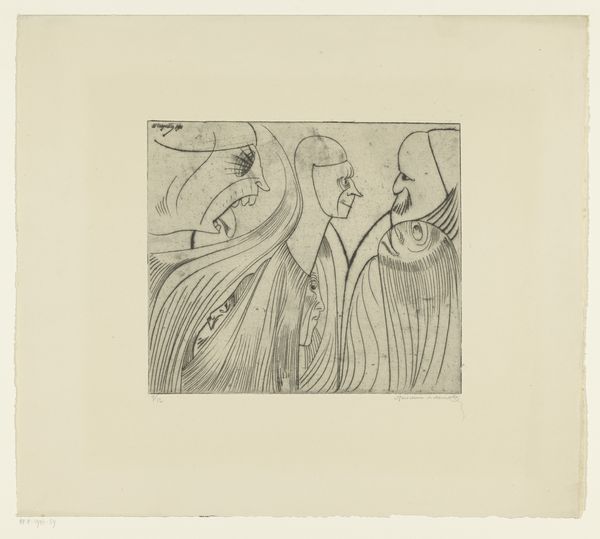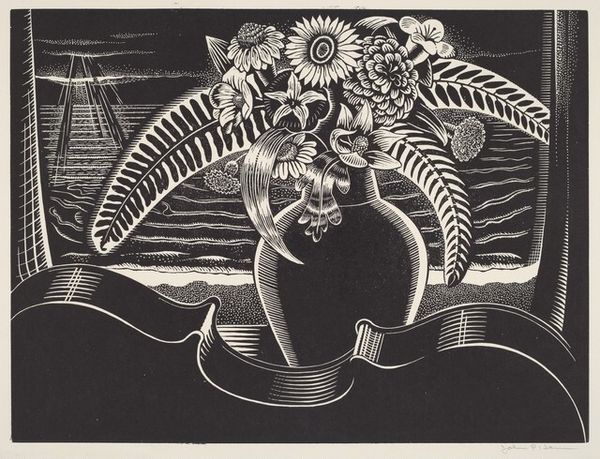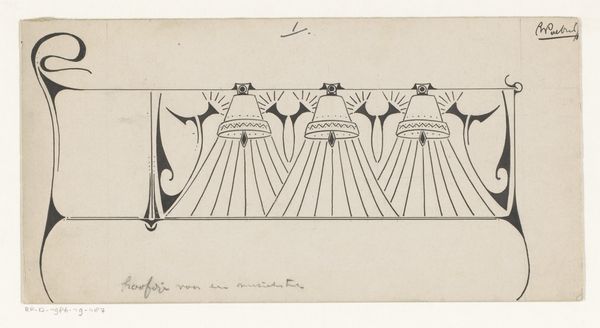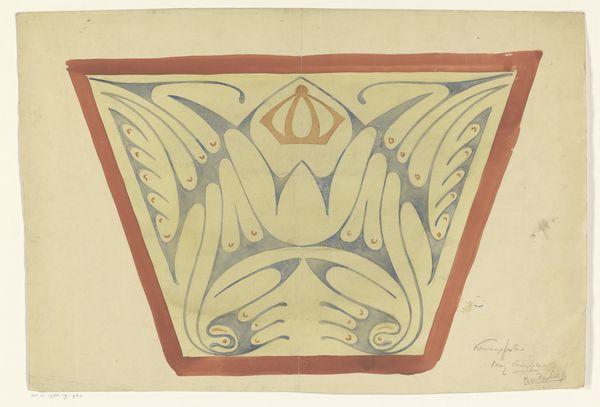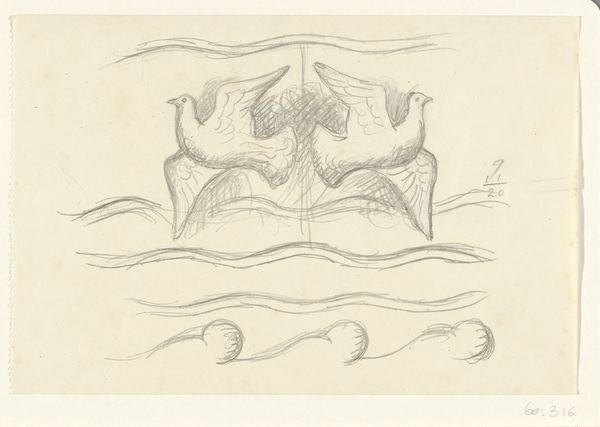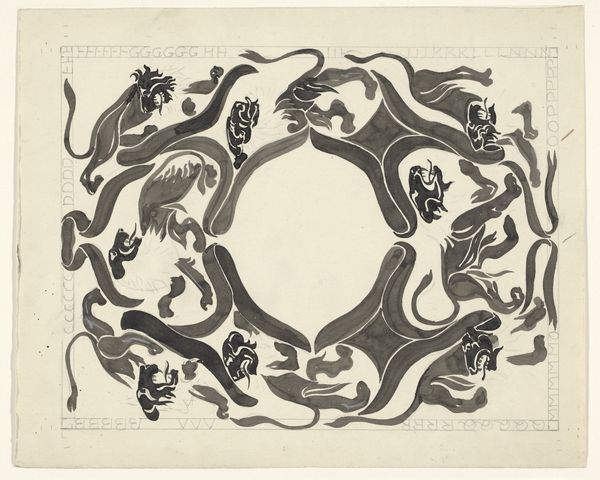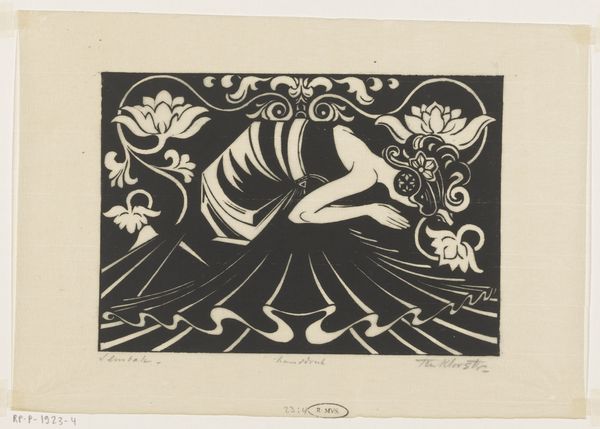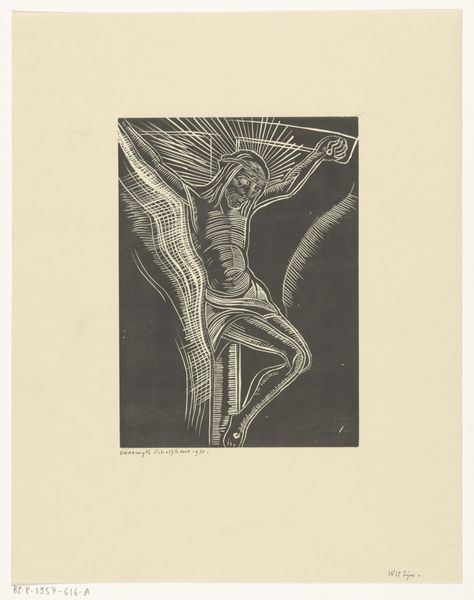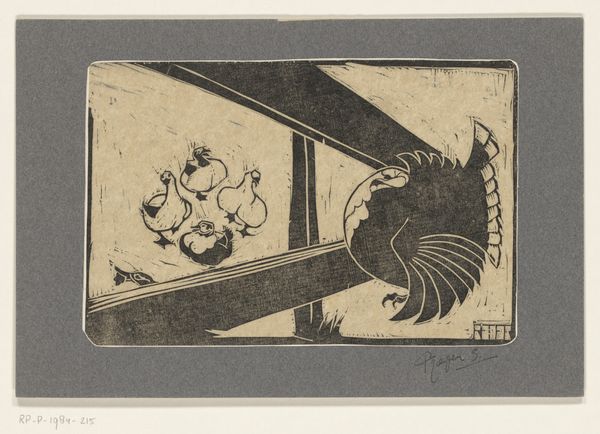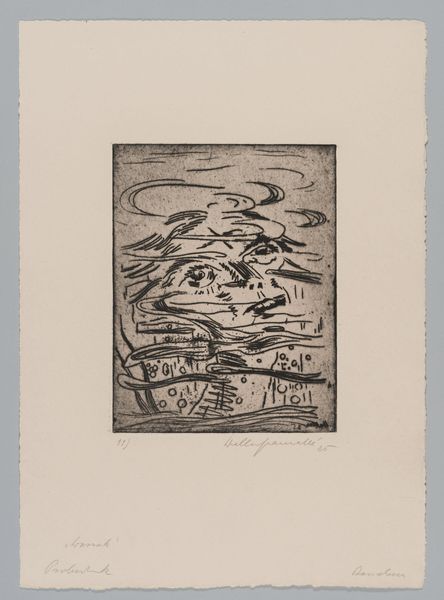
Sluitvignet met fronsend mannenhoofd, doedelzakken en een dansend paar 1896
0:00
0:00
drawing, graphic-art, ink
#
drawing
#
graphic-art
#
art-nouveau
#
figuration
#
ink
#
symbolism
Dimensions: height 118 mm, width 275 mm
Copyright: Rijks Museum: Open Domain
Editor: This is Reinier Willem Petrus de Vries’ “Sluitvignet met fronsend mannenhoofd, doedelzakken en een dansend paar” from 1896, made with ink as a drawing. The sharp lines and contrasting tones create a rather severe visual, despite depicting dance and music. How do you interpret this work? Curator: The stern, central male figure anchored by bagpipes immediately reads to me as a patriarchal symbol, especially within the Art Nouveau context and the rise of Symbolism. Consider the power dynamics at play. Are the dancing figures, framed by this domineering image, truly free, or are they performing under the gaze and societal constraints dictated by such figures? What message does de Vries send regarding gender and tradition here? Editor: I see what you mean. It’s like the joy of the dance is almost a performance *for* this frowning man, not necessarily an expression of their own joy. Is the artist commenting on the roles men and women play? Curator: Precisely! And we must also examine how the artist uses “Dutch” cultural signifiers – the bagpipes, the dancing couple – to define cultural identity in that moment, maybe critically reflecting on the rigidity of the cultural norms of the time. Consider how Art Nouveau, while decorative, also served as a platform for challenging such traditional representations. The lines, although pretty, seem restrictive and unforgiving, no? Editor: Definitely. Looking at it now, the bagpipes seem almost like bars of a cage. I hadn’t considered how actively this piece engages with social commentary! Curator: It’s about seeing beyond the surface beauty and questioning the relationships of power, gender, and cultural identity at play. Symbolism encourages this level of exploration, using allegory to get at core belief systems. Editor: I’ll never look at a dancing couple the same way! Thanks, that's a new perspective on this era of art. Curator: It shows how much art can uncover about social contexts beyond aesthetics. We’ve both learned that what initially appears joyful can hold more complex and even critical layers of social discourse!
Comments
No comments
Be the first to comment and join the conversation on the ultimate creative platform.
